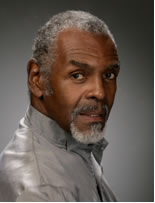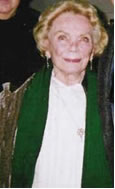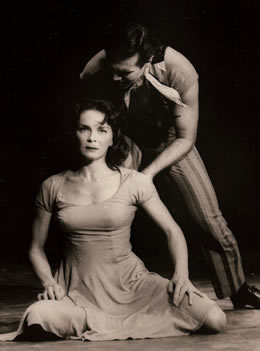Dancers Over 40 ARTS Legacy

Gus Solomons, Jr. Interviewed by Gregg Mayer ARTSLegacy is delighted to kick off with an informal chat I had with Gus Solomons, Jr., a Renaissance Man for all generations. The last time I interviewed Gus, it was for an NPR Dance in Review program I hosted in St.Louis about 30 years ago, so I thought it might be nice to enquire as to what he's been up to during the past, oh, three decades or so. Turns out that Gus is as busy as ever. Working with his group Paradigm, co-founded and performed with Carmen de Lavallade and Dudley Williams, he has a few performances coming up, including at the Joyce and on tour. He is also a full-time professor at NYU's Tisch School of the Arts, where he has been choreographing and teaching since 1994. Other recent and most excellent adventures include a new career in modelling and acting. As a writer on Dance, Gus has been published in Dance Magazine, Gay City News and DanceInsider.com. Gus was an architectural student at MIT, coming as he did from Cambridge, Massachusetts, graduating in May 1961. His transition to dancer was as abrupt as it was typical of that era: the glorious Donald McKayle was doing "Kicks and Co!" as his first Broadway show and knew Gus from some dance classes Gus had taken in Boston. After that show, Gus remained in the Big Apple, studying with Martha Graham, and Merce Cunningham. Paying his rent by working in design and renderings, he found himself laid off in 1963 and boom! an offer came in the same mail, to teach two classes, once a week at Boston's Dance Circle. Schlepping up and down on the NorthEast shuttle, Gus became a bona fide 60's dancer, like so many of us in DO40.
In 1964, McKayle suggested he assist him at UCLA, and when McKayle got invited back to Broadway that summer, Gus taught for him at the university. The following season he danced with the Graham company, followed by three years with Cunningham. That's when I met him, because when Merce had his first (and spectacuIar) London season in 1966, I'd asked Merce to teach a master class for my advanced Modern students in London; I worked with Gary Cockerell, who'd come over with West Side Story and remained, to open the Dance Center, London's first major dance building. The link here (in case you're wondering) is that Merce and Gary had shared a small studio in NY prior to that period, so Merce was tickled to be working in Gary's new digs! And I was thrilled to discover this new technique, which I stayed with forever. So there was Gus, literally crawling around in "Place," my favorite Merce piece of all time, and he already seemed a special kind of artist, someone new on the international scene, this beautiful, tall, slim black male dancer. Many people felt similarly and he was much in demand as a dancer and teacher, but his back injuries kept interfering with his career as a dancer. He found that he'd recover, only to have another set-back. By 1968, therefore, he was in Boston creating "City/Motion/Space/Game, as choreographer, performer and video designer. And in 1969 he was ready to create his own company, which was incorporated in 1972: Solomons Company/Dance. The company toured with the NEA National Touring Program for several years and comprised many dancers who went on to become pillars of their dance communities. Now, at 70, Gus Solomons is going strong, still tall, slim and beautiful. We are thrilled that he is a DO40 member and we honor him as our first ARTSLlegacy subject. |
Gemze de Lappe
Interviewed by Lois Silk Gemze de Lappe was one of four receipients of the 2007 Tony Honors for excellence in the theatre. Her many credits, too numerous to mention here, but the ones she is most remembered for are: "Oklahoma," "Carousel," "Paint Your Wagon," and "The King and I." She will be honored this December with the first Dancers Over 40 Legacy Award, along with Marge Champion, Marge Beddow, Nicole Barth and Billie Mahoney. WHAT INSPIRED YOU TO BE A DANCER? By the time I was eight or nine I knew I was a dancer! At 11-1/2 I was told by my music teacher that I was very gifted and with practice could be a violinist but I knew that I could be a really fine dancer and that was my choice. I attended the High School of Music and Art but my choice had already been made. WHO WAS THE MOST INFLUENTIAL PERSON IN YOUR CAREER?
WHAT WAS THE MOST FRIGHTENING MOMENT YOU EXPERIENCED? Restaging and coaching Robbins and especially de Mille works that once the young dancers got the understanding of the emotions involved in a particular dance they became very intrigued and excited to master this. I feel very rewarded when these young dancers get it and make their own and in doing so they too feel very rewarded. My continued work in bringing these works to life has given me great satisfaction. The next generation will keep alive the genius of de Mille and Robbins. Many of the artists of my generation are also passing along their legacy. Finally, what I am most proud of is all the roles I have danced and all the partners that shared in these performances. | |




